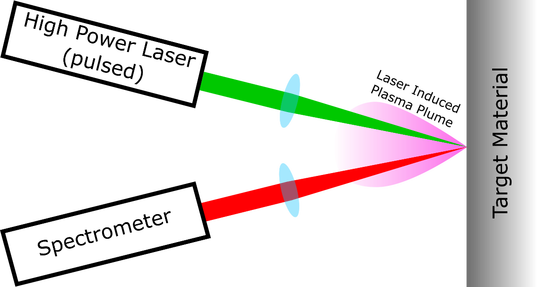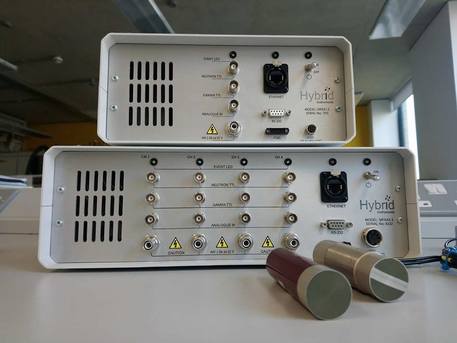Technologies and Approaches.
|
Remote Optical Characterisation
Laser induced Breakdown Spectroscopy (LIBS) uses focused pulses of laser light to help identify elemental composition of materials. The high intensity laser light on the material surface produces a plasma containing some of the material, the colour of the plasma depends on what material is present.
The light from the plasma is collected and a spectrometer is used to separate out the light from different elements. For example, aluminium will produce a different colour plasma compared to zinc or copper. These unique peaks in plasma emission at different wavelengths are then used to identify unknown materials by comparing them to known samples.
The different signal strengths of each peak can also reveal information about alloys or materials that are make up of multiple chemical elements. This information can further be used to determine what types of complex materials are encountered, for example what particular type of stainless steel is present. For very complex materials, such as organic molecules, the vast number of peaks that could be present makes identification difficult, in which case the data would be compared to other diagnostics like Raman Spectroscopy to help in identification.



